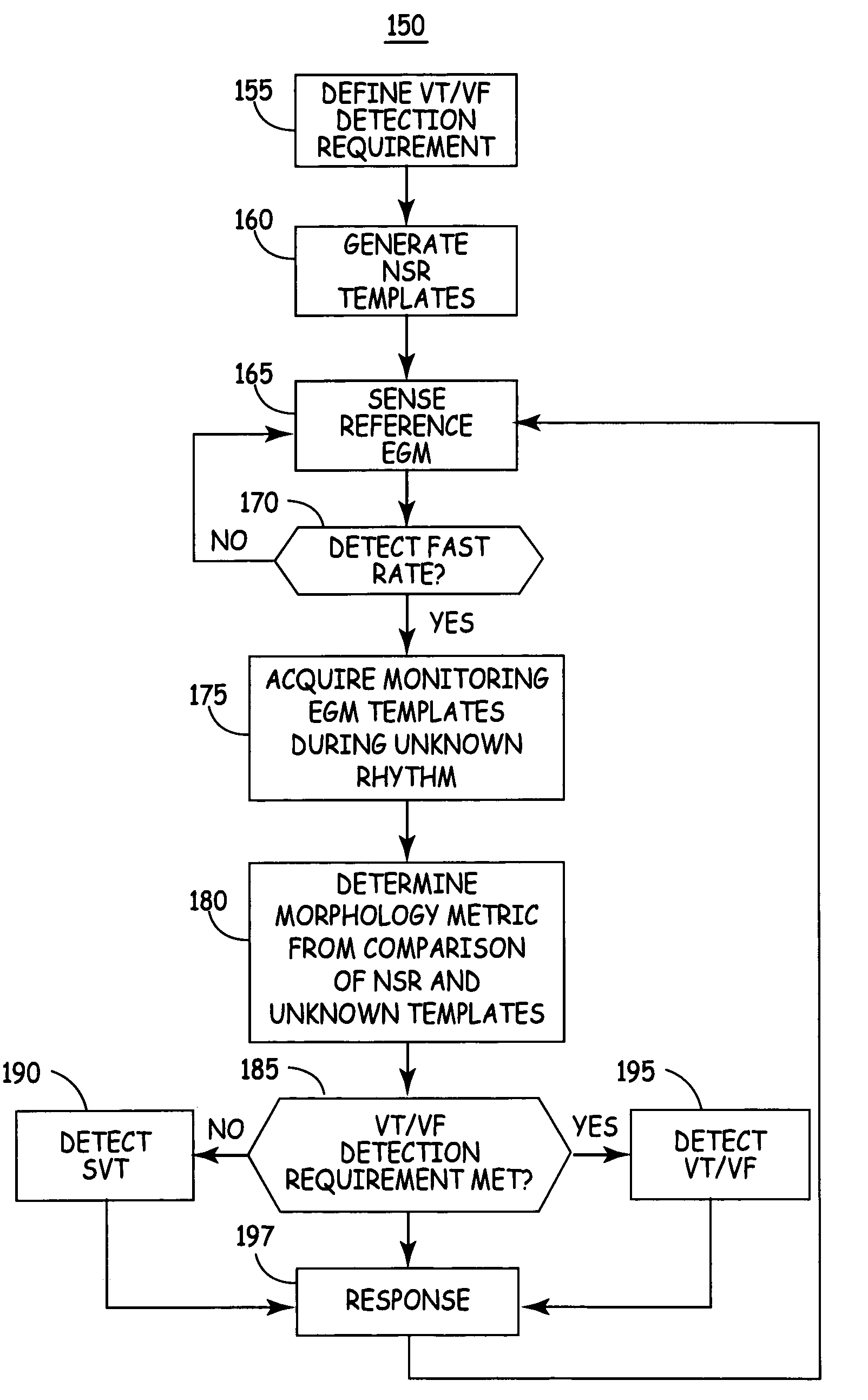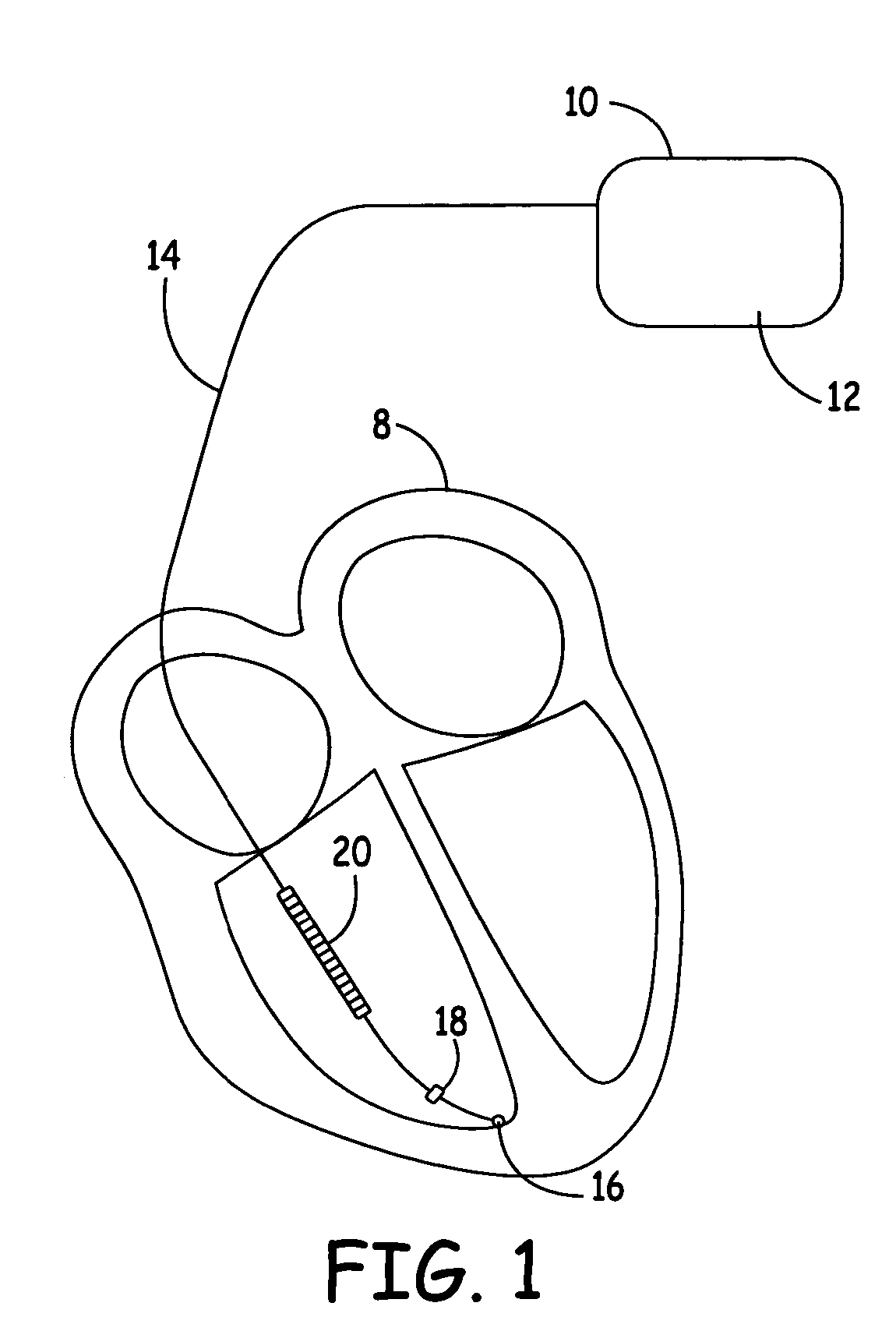Method and apparatus for discriminating ventricular and supraventricular tachyarrhythmias
a ventricular and supraventricular tachyarrhythmia technology, applied in the field of arrhythmia detection and treatment, can solve the problems of affecting the patient's recovery, and reducing the effect of the patient's recovery
- Summary
- Abstract
- Description
- Claims
- Application Information
AI Technical Summary
Benefits of technology
Problems solved by technology
Method used
Image
Examples
Embodiment Construction
[0024]The present invention provides a system and method for detecting and discriminating VT / VF from SVT using morphology information derived from two unique ventricular EGM signals. Since both normal sinus rhythm (NSR) and SVT originate in the atria and are conducted to the ventricles via the A-V node, the morphology of the R-wave complex during NSR and SVT will generally be highly correlated. VT / VF originates in the ventricles and will generally present a change in the R-wave morphology, but not in all cases. The time difference between the R-wave peaks detected on a monitoring EGM signal and-on a-reference EGM signal during NSR is expected to change during VT / VF due to a change in the ventricular conduction pattern.
[0025]The system according to an embodiment of the present invention includes a reference EGM signal source and two unique monitoring EGM signal sources coupled to signal processing circuitry and a microprocessor with associated memory for analyzing and comparing the E...
PUM
 Login to View More
Login to View More Abstract
Description
Claims
Application Information
 Login to View More
Login to View More - R&D
- Intellectual Property
- Life Sciences
- Materials
- Tech Scout
- Unparalleled Data Quality
- Higher Quality Content
- 60% Fewer Hallucinations
Browse by: Latest US Patents, China's latest patents, Technical Efficacy Thesaurus, Application Domain, Technology Topic, Popular Technical Reports.
© 2025 PatSnap. All rights reserved.Legal|Privacy policy|Modern Slavery Act Transparency Statement|Sitemap|About US| Contact US: help@patsnap.com



